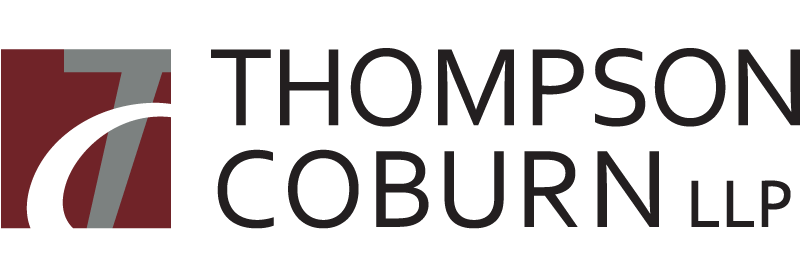In recent years, there has been a significant uptick in merger and acquisition activity involving institutions of higher education, and many familiar with the industry expect this trend to continue. For-profit institutions have long been involved in transactions, but this recent activity is notable in that it includes an increasing number of mergers, acquisitions, and other ventures involving “traditional” higher ed (e.g., private, nonprofit and public institutions). While these transactions may occur within a single sector, it also is increasingly common to see cross-sector transactions in the news (i.e., a nonprofit acquiring a for-profit).
Why M&A?
Whether an institution is for-profit or nonprofit, private or public, the motivations for pursuing a merger or acquisition typically are the same. Institutions facing financial strain or operational challenges often view a sale or merger as a path to recovery. Mergers can offer such schools an opportunity to reduce costs, share services, expand program offerings, and improve marketing and brand recognition. Conversely, institutions with capital may see a merger or acquisition as an opportunity to grow enrollments, acquire a new platform or programming, increase their geographic footprint, and otherwise advance their mission.
Much of the recent transactional activity has been driven by an increase in the number of colleges and universities that have attractive attributes, but nonetheless are in some form of financial distress. For postsecondary institutions (and other investors) with financial wherewithal and transactional savvy, these struggling schools represent an opportunity to acquire enrollments, programming, and other desirable elements at a very favorable price point.
Colleges and universities interested in growth through acquisition also are benefitting from a more favorable regulatory environment. State and federal regulators, as well as accreditors, have shown an increased willingness to approve transactions over the last two years, even where such transactions may be complex or unorthodox.
While there certainly can be many benefits to such transactions, the road is almost always unpredictable — legal, operational, and cultural challenges abound, and outcomes vary. It is often difficult to know whether two institutions are compatible without a substantial investment of time and due diligence. Institutions of higher education also face the added challenge of attempting to carry out mergers and acquisitions in a highly regulated environment.
As such, it is critical that colleges and universities embarking on a strategic transaction proceed with care and deliberation, and engage seasoned advisors who are well-versed in the regulatory space and familiar with the legal and financial issues that are specific to institutions of higher education.
The letter of intent
Strategic transactions can arise in any number of ways. A fortuitous meeting may yield a “cocktail napkin” blueprint, with the broad strokes of a merger or acquisition scribbled on a scrap of paper or set out in a text. Or professional intermediaries may put two institutions together, convinced that they could benefit from a merger or sale.
Regardless of how a transaction is conceived, the first meaningful step in documenting the transaction is typically the letter of intent (LOI). The LOI, also called a term sheet or memorandum of understanding, sets forth the main “business” terms of the deal, such as the purchase price, whether assets or stock will be transferred, the required consents, and various other significant terms. The LOI is commonly prepared by the acquiring institution and sent to the selling institution for confirmation that there is mutual agreement on the general structure. In our practice we often have seen institutions prepare and complete an LOI in haste, caught up in the excitement of the moment. This is a mistake. The LOI is the first real stake in the ground for both institutions. A considered, well-crafted LOI provides clarity to both parties as to the most fundamental components of a proposed transaction, and can significantly increase the likelihood of success.
LOIs are generally not binding, meaning there is no obligation for either party to close or fund a transaction. However, the parties (i) typically require confidentiality regarding the proposed transaction and any materials exchanged in exploring the transaction, and (ii) often grant the buying institution exclusivity for a certain time period so that it has time to conduct due diligence and work towards the transaction without distraction.
LOI tips
In addition to major items such as purchase price, transition matters, and contingencies to closing, there are several areas of an LOI that are particular to a postsecondary transaction. For example:
- Regulatory consents. It is critical to understand the governmental authorities governing the selling institution at the federal, state, and local levels, as well as expectations of institutional and programmatic accreditors, licensing boards, and funding agencies.
Must these regulators consent to the transaction before it can consummate, and when are notifications (both mandatory and optional) appropriate? How long do these applications and requests take, and when is it appropriate to submit them? Who takes care of these notifications and consents and who is communicating with the regulatory bodies on behalf of each institution? If the parties do not obtain the requisite consents and deliver timely notifications to the authorities, an entire transaction could be deemed void and invalid.
- Closing date. If the U.S. Department of Education (ED) is involved, it is advisable to close within the first 10 calendar days of any month. Why that particular timing? Because same-day audited balance sheets are due to ED by the end of the month following the month in which the transaction successfully closes. General practitioners who are not accustomed to these rules and regulations frequently remark to us, “That’s a strange provision.” But failing to make these filings on time could lead to the unwinding of an entire transaction and months of work.
- Accounting issues. A good accounting firm specializing in educational institutions is often critical to the process. How will the parties calculate student accounts receivable for purposes of the transaction? How will the institutions manage bad debt, student refunds, and obligations relating to federal financial aid funds? Will the acquiring institution pass the same day balance sheet tests performed by ED following the consummation of the sale? How will the transaction impact the acquiring institution’s federal composite score? A number of reputable accounting firms are experts in the industry and can assist institutions to think through these considerations.
In the coming months, we’ll be further discussing mergers and acquisitions in the higher education space, in each case focusing on different aspects of the process. We also encourage interested parties to join us for our free webinar, “Mergers and Acquisitions in Higher Education: Key Points of the Letter of Intent,” which will be held on September 12, 2018. We’ll delve further into the details of the LOI and the various provisions that are unique to the higher education industry. We will also spend some time discussing transaction trends in the industry and some hallmark deals that appear to be blazing the trail for other institutions.
For more information on higher education transactions or other corporate or regulatory legal advice, contact Emily Wang Murphy, partner in the firm’s Corporate & Securities practice; Katie Wendel, counsel in the firm’s Corporate & Securities, Higher Education and Nonprofit practices; and Aaron Lacey, partner in the firm’s Higher Education and Nonprofit practices.
Disclaimer: This post does not constitute legal advice nor does it initiate an attorney-client relationship.
















